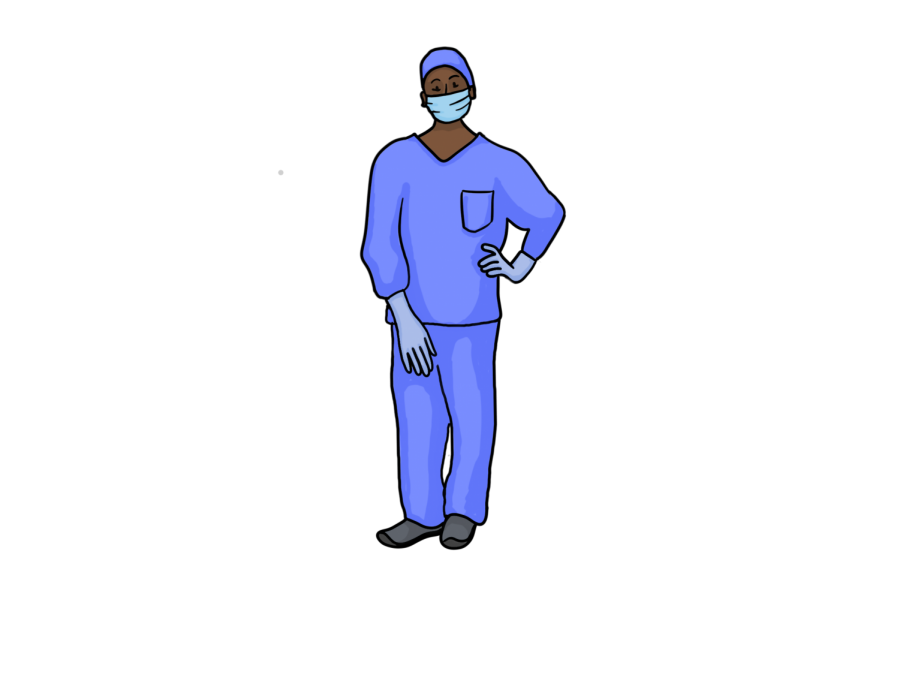SPOTLIGHT: Future medical students
In the late months of 2020 when hospital beds were sparse and vaccines were not readily available, healthcare workers delved into fighting a highly infectious ailment: the coronavirus. Turmoil was widespread amongst the medical industry with doctors, nurses and medics residing in a state of wariness. Even with the unpredictability that comes along with working a job in the healthcare field, many members of the SCHS community envision wearing scrubs and a white coat in the future.
Through exposure from various medical centered extracurriculars, students are able to explore the nooks and niches of the medical field without committing to the standard eight year long schooling route. Junior America Jeronimo’s interest in the field strengthened through her experience as SCHS’s Red Cross Club secretary.
“I really enjoy extracurriculars that are medical based because it helps me figure out some of the things that I do and do not like,” Jeronimo said. “I find some things more interesting than others.”
Aside from her club endeavors, Jeronimo has volunteered to create handmade masks for various locations, including hospitals and shelters. Jeronimo’s experiences have crafted her career goal of becoming a physician assistant, specializing in either neurology or cardiology.
Along with various school chartered opportunities, others not affiliated with SCHS are also a worthwhile learning experience for many students.
Junior and Red Cross Club co-president Kaitlyn Butcher is looking forward to this summer, which includes a biotechnology internship led by Stanford.
“We will be doing a capstone type project where we will have our own case to study and things of that sort,” Butcher said. “I got this internship from applying and being one of the few selected to participate.”
Besides Butcher’s aspirations of becoming a biomedical engineer, her wish to pursue a career in the oncology field derived from observing her family members battle with cancer.
Despite exposure to the medical field, commitment is not always guaranteed. The Association of American Medical Colleges stated the dropout rate for medical students involved in a four year program is around 15.7% to 18.4%. Along with the cost accompanying a medical degree, these statistics appear daunting to many students, but with proper inspiration comes probable fruition.
Like Butcher, senior Giselle Aviles is considering climbing the biotechnological ladder. Her inspiration can be attributed to family influence.
“My mom didn’t get to finish her medical degree because she had me, so I wanted to continue that dream for her,” Aviles said. “I like biology as well, so I thought I might as well pursue it.”
Despite the difficulties presented by working a medical job, inspiration aids students in pursuing their goals, creating the backbone of a tangible future. A future that may lead some SCHS students to reform the field’s problematic counterparts.
“Not everyone can afford health care,” freshman Vannessa Delgado said. “I think that everyone should be able to be helped if they have some medical problem, and money shouldn’t be an issue for them.”
Delgado feels the cost of medical treatment is a large detriment on the wellbeing of many Americans.
“Particularly in the U.S., the cost of an individual plan is drastically higher than in any other country,” sophomore Erin Mizota said. “Everyone should be entitled to affordable healthcare, but the inflated prices make it much harder to make care accessible to all people.”
Delgado and Mizota are two of the many free healthcare advocates at SCHS. With the movement on a rise, receiving medical treatment may become more affordable in the future.
Along with the hospital bill comes – what junior Arisha Sadar would describe as – inherent ignorance, mostly towards women of color.
“Pregnant black women have the highest mortality rate amongst any other race within pregnant women,” Sadar said. “The vast array of ignorant doctors who refuse to consider their complaints are most likely responsible for this high mortality rate.”
Sadar noted that many doctors have not been properly trained to deal with varying races and genders.
“In order to solve this problem, future medical school students will hopefully be in a curriculum that focuses on the differences of each race, ethnicities and sex,” Sadar said. “Hopefully preventing another such high statistic similar to the high mortality of black pregnant women.”
Revolution is on the rise as members of the SCHS community learn more about medical careers. Through health-centered endeavors and adhering to their inspirations, these students are paving a path toward the medical field and their dream careers.


